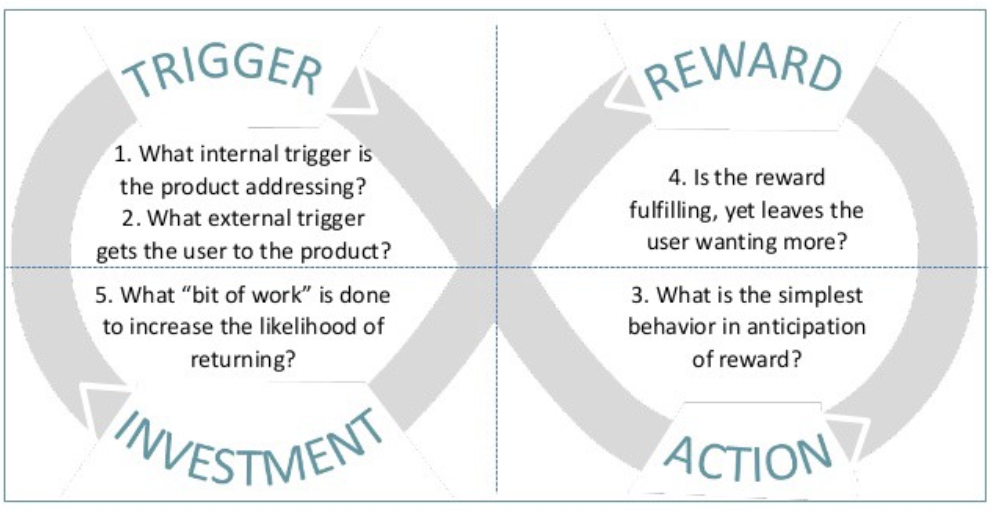The Hook Model
Episode #4 of the course Product management toolkit by Rich Headley
Welcome to lesson four. In the previous lessons, we explored the Value Proposition Canvas, value hypothesis, and Kano model. These tools will help you hone in on a feature set that will solve your customers’ problems and satisfy them. But how can you make your product addictive? Now, don’t get me wrong—I’m not talking about a bad addiction—I’m talking about your customer continually receiving value from investing their time and money, being aware of that value, and wanting to further invest in your product in anticipation of additional satisfaction.
What I’m going to introduce to you here is the Hook Model, which was developed by Nir Eyal, the bestselling author of “Hooked” which I highly recommend you add to your product management bookshelf. I read it early in my product management career, and it’s helped me think about how to build habit-forming products.
The essence of the Hook model is that every time someone uses your product, there is a trigger. Now initially, the trigger is external. Something in the universe makes your user aware of the need to use your product. Maybe it’s an ad, or an email reminder, or a notification on your phone. Let’s say a friend shared a Pinterest board with you.
Then comes action. This just means starting to use the product. Maybe you click the link your friend sent and log in to your Pinterest account.
After the action comes a reward. Now sometimes the reward you get from using a product is very predictable. If your friend sends you a link to a very specific thing on their board, and you see that little image preview in your messaging app, you pretty much know what you’re going to see when you click the link. But that isn’t necessarily something that’s going to cause you to invest further in the product. The magic of Pinterest is that when you click that thing, you’re also going to have an endlessly scrolling list of similar things at your fingertips. And you’ll maybe find something else that catches your eye. This is a variable reward. And these kinds of rewards are truly habit-forming.
OK, so you scrolled through a Pinterest board and noticed something you liked. What comes next? Typically, you pin it. Or you send it to another friend. Maybe you even start creating your inspiration board based on what you found on your friend’s board. This step is called investment. You’re investing further into the product in anticipation of a future reward.
This has been the first full completion of the Hook loop. You’ve had a trigger, taken an action, gotten a reward, and invested further. The important thing to note is that eventually when your customer has had enough external triggers, a more deep indication that they’ve formed a habit around your product is that they now have internal triggers. You remember something you added to your Pinterest board. So you go in there to take a look. And while you’re in there, clicking around, you go down another rabbit hole of endless scrolling until something else catches your eye, and you also pin it. You’ve now further invested in the product, and over time, it becomes quite an irresistible daily routine.
Now, not every Product job involves building something like Pinterest. Maybe you’re responsible for a line of athletic shoes. Or a corporate learning platform. Or a document storage application. All products can result in habit formation that keeps customers coming back for more.
In our next lesson, we’ll talk about the RICE Method.
Recommended reading
Share with friends


